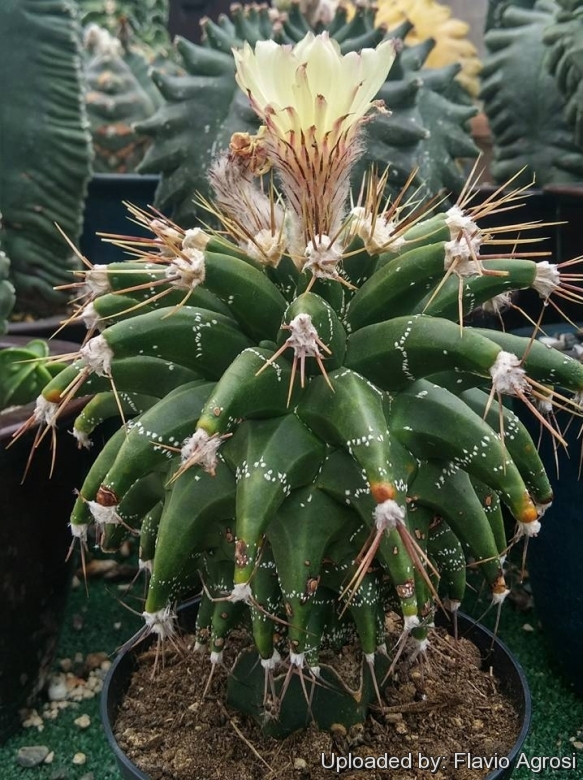
Astrophytum ornatum cv. Kikko Photo by: Flavio Agrosi
Origin and Habitat: Garden origin (Nursery produced cultivar)
Synonyms:
See all synonyms of Astrophytum ornatum
back
Accepted name in llifle Database:Astrophytum ornatum (DC.) F.A.C.Weber in BoisDict. Hort. [Bois] 1: 467. 1896Synonymy: 23
Cultivars
(4):
back
Description: Astrophytum ornatum cv. KikkoSN|3660]]SN|29594]] is a rare cultivar distinguished for its stem entirely split in tubercles, in fact its areoles stick out on long conical notches and could be a mutation much like the Astrophytum myriostigma cv. Lotusland, but much larger and robust with longer tubercles. The epidermis is covered by more or less dense (depending on clone) white flecks that cover the tubercles. In general the bigger the “teeth” are and the longer and fatter they are, the better. The stem is solitary and often fails to produce offsets even if it has had its top cut off to encourage the formation of a crown of branches. All species of Astrophytum (excluded Astrophytum caput-medusaeSN|3593]]SN|3593]]) have their particular "kikko" variants.
Remarks: This plant is often confused with the controversial hybrid Astrobergia cv. Astrophytum sp. x Leuctenbergia principis which is very similar (if not the same?).
Flowers: The flower reminds those of the Astrophytum ornatumSN|29594]]SN|3660]], pale-yellow, shining-silk.
Blooming season: Spring to summer.
Subspecies, varieties, forms and cultivars of plants belonging to the Astrophytum ornatum group
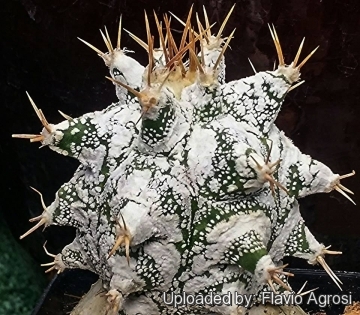 Astrophytum ornatum cv. Kikko (selected) Photo by: Flavio Agrosi
Astrophytum ornatum cv. Kikko (selected) Photo by: Flavio Agrosi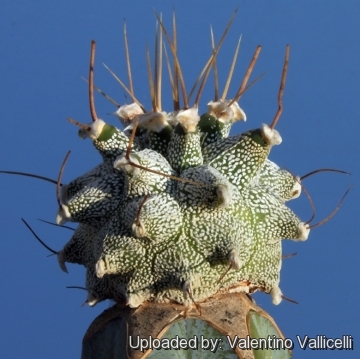 Astrophytum ornatum cv. Kikko Photo by: Valentino Vallicelli
Astrophytum ornatum cv. Kikko Photo by: Valentino Vallicelli Astrophytum ornatum cv. Kikko Photo by: Flavio Agrosi
Astrophytum ornatum cv. Kikko Photo by: Flavio Agrosi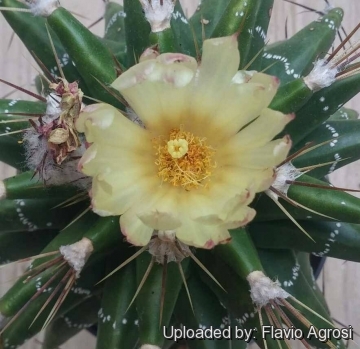 Astrophytum ornatum cv. Kikko Photo by: Flavio Agrosi
Astrophytum ornatum cv. Kikko Photo by: Flavio Agrosi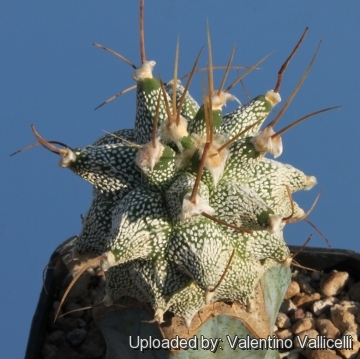 Astrophytum ornatum cv. Kikko Photo by: Valentino Vallicelli
Astrophytum ornatum cv. Kikko Photo by: Valentino Vallicelli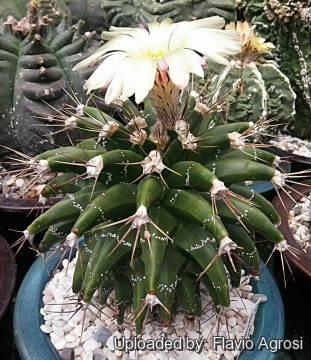 Astrophytum ornatum cv. Kikko Photo by: Flavio Agrosi
Astrophytum ornatum cv. Kikko Photo by: Flavio AgrosiCultivation and Propagation: Astrophytum ornatum cv. KikkoSN|29594]]SN|29594]] is regarded as choice and difficult in cultivation, but despite that it is relatively easy to grow. It is usually seen as a grafted plant, but it is able to grow on its own roots, but slow growing.
Soil: Use mineral well-permeable substratum with little organic matter (peat, humus).
Repotting: Repotting every 2-3 years. It will need a pot with sufficient depth to allow the tap root. As it is especially prone to rot under-pot in a smaller container filled with very porous compost. Use pot with good drainage.
Watering: Water sparingly from March till October, and keep perfectly dry in winter, at temperatures from 5 to 15 degrees centigrade. In the rest period no high atmospheric humidity!!Care must be taken with watering as they tends to become swollen and untidy in growth habit if given too much water and shade.
Exposition: Outside bright sun, filtered sunlight or afternoon shade, inside it needs bright light, and some direct sun. Subject to sunburn if exposed to direct sun for too long. Tends to bronze in strong light, which encourages flowering and heavy spine production.
Hardiness: Reputedly sensitive to frost, but less so if kept on the dry side prior to, and during, cold weather (hardy to -5° C for short periods). However some warmth throughout the year will increase the grower's success (minimum 5° to 8°C during rest season).
Fertilization: During the growing season enrich the soil using a fertilizer rich in potassium and phosphorous, but poor in nitrogen, because this chemical element doesn’t help the development of succulent plants, making them too soft and full of water.
Pests & diseases: It may be attractive to a variety of insects, but plants in good condition should be nearly pest-free, particularly if they are grown in a mineral potting-mix, with good exposure and ventilation. Nonetheless, there are several pests to watch for:
- Red spiders: Sensitive to red spider mite. Overhead watering is helpful in controlling mites.
- Mealy bugs: Occasionally mealy bugs they develop aerial into the new growth among the wool with disfiguring results, but the worst types develop underground on the roots and are invisible except by their effects.
- Scales: Scales are rarely a problem.
- Rot: Rot it is only a minor problem with cacti if the plants are watered and “aired” correctly. If they are not, fungicides won't help all that much.
Propagation: By seeds, grafting or cutting. Seeds germinate in 7-14 days at 21-27° C in spring, remove the glass cover gradually as the plants develops and keep ventilated, no full sun for young plants! The seedlings should not be disturbed until they are well rooted, after which they can be planted separately in small pots.
















